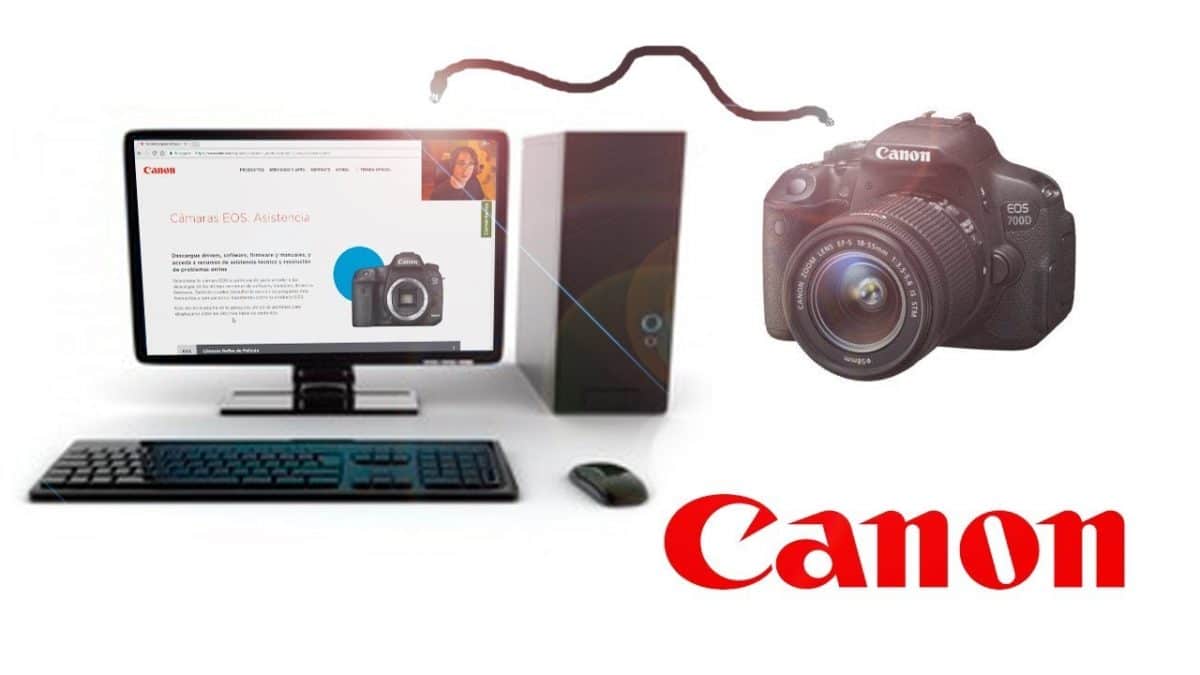In this guide, we will see how to use Canon cameras as a webcam to have the highest video quality in video calls.
Video calls have multiplied exponentially, so much so that the network is saturating with the amount of data exchanged between devices and servers.
Throughout the network, you will find many companies selling their webcams. The best ones are unfortunately very expensive, but some users may have tried a trick to have a decent webcam to do their virtual meetings with friends, family or work.
That’s why, for all the lucky ones, Canon has made available a program that transforms an SLR camera into a webcam.
As explained in DPReview, the company has released a beta version of “EOS Webcam Utility”, a software which, as its name suggests, is a tool for converting EOS cameras to webcams.
How to use the Canon camera as a free webcam
Since April 2020, Canon has allowed you to use almost all of its latest cameras on the market as a webcam. This was a feature that its users have been asking for for years, and implementation couldn’t be simpler, since all we need is a camera, a USB cable and drivers that take up only 1.5 MB.
Canon cameras compatible with this program include SLR and mirrorless cameras, whether they are Full Frame, APS-C, compact or any other type. The cameras supported by EOS Webcam Utility are as follows:
EOS SLR cameras
- EOS-1D X Mark II
- EOS-1D X Mark III
- EOS 5D Mark IV
- EOS 5DS
- EOS 5DS R
- EOS 6D Mark II
- EOS 7D Mark II
- EOS 77D
- EOS 80D
- EOS 90D
- EOS Rebel SL2 (200D)
- EOS Rebel SL3 (250D)
- EOS Rebel T6 (1300D)
- EOS Rebel T6i (750D)
- EOS Rebel T7 (2000D)
- EOS Rebel T7i (800D)
- EOS Rebel T100 (4000D)
EOS mirrorless cameras
- EOS M6 Mark II
- EOS M50
- EOS M200
- EOS R
- EOS RP
PowerShot cameras
- PowerShot G5X Mark II
- PowerShot G7X Mark III
- PowerShot SX70 HS
In the EOS Webcam Utility Beta link, we find the links to the drivers that we must download for each model. Officially it is only available in the United States, but we can use it without problems in some other countries if we have compatible models.
We have to choose the model of our camera and in the software section we go to EOS Webcam Utility Beta 0.9.0 for Windows, we give Select and then Download. We will download the EOSWebcamUtilityBeta-WIN0.9.0.zip file, which we will have to decompress to have a .msi file that we will have to execute.
We continue the whole installation process by clicking Next and we will already have the drivers installed so that Windows can detect our camera as a webcam.
We restart the computer and go to test if it works. For this, we have to turn on the camera, put it in video mode, and connect it to the PC with a USB cable. This can be a problem on Mini-USB models, while recent mirrorless ones use USB C and you will probably already have such a cable in your home.
To check if it works, we have several options. The most convenient is the Webcamtests website, where we need to authorize Chrome to access our camera. There we can see not only the image but the technical data of the signal, such as resolution or frames per second.
We can also go directly to the messaging application that we will use, such as Zoom or Skype, and select it as a source. As we will see, the image quality is excellent and the autofocus works perfectly.
SLR cameras do not support cable charging, so the battery may not last long. Therefore, it is advisable to have at least one backup battery if the call will be prolonged for a long time, in addition to a tripod on which to place it.
If you still want to use the camera as a webcam but it’s not in the compatible list, all you can do is buy an HDMI video capture device and connect it to your computer. For this, your camera must have an HDMI output and have the corresponding cable (usually Micro HDMI or Mini HDMI).

